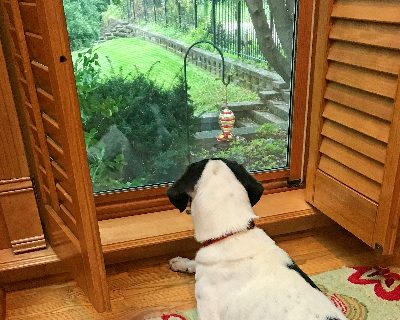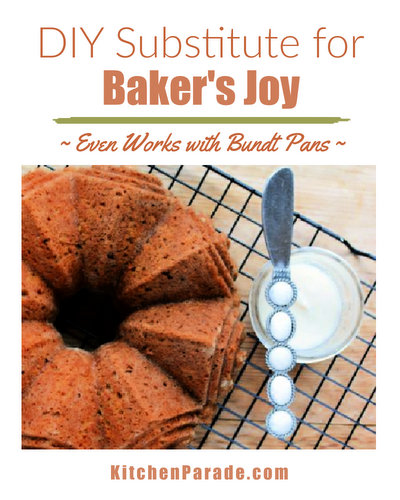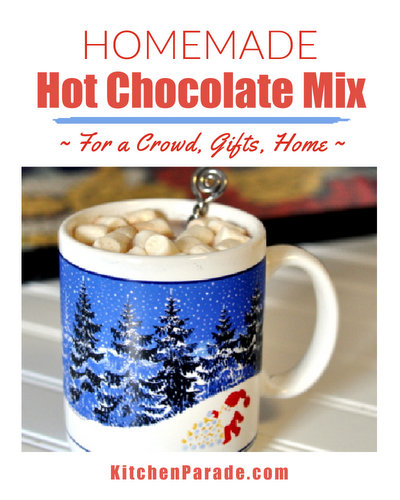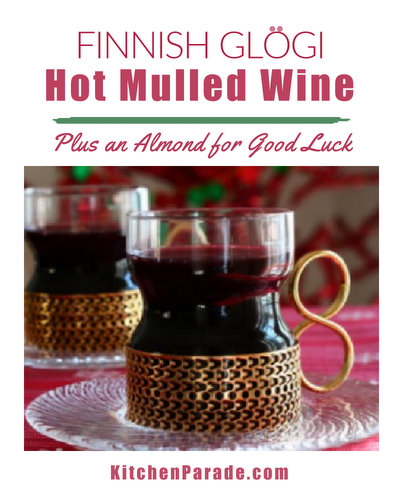| Hummingbird Food |  |
The Sugar:Water Mixture to Attract and Safely Feed the Neighborhood Hummingbirds. How to Pick a Good Feeder. How to Clean and Fill Hummingbird Feeders. How to Watch Hummingbirds, Up Close & Personal. It's Seriously Fun!

that I'm adding it to a special collection of easy summer recipes
published every summer since 2009.
This is the first for 2023 but
watch for new "summer easy" recipes all summer long!
With a free e-mail subscription, you'll never miss a one!
Can You Make Hummingbird Food at Home? Yes! Absolutely YES!
Bear with me a minute.
Two days ago, my husband bought a package of biscuit mix. The checkout guy scoffed. "It's just flour and salt," he mocked.
And of course, the unkind grumpy outright-mean checkout guy was right. But you know what? My husband is thrilled at the prospect of fresh biscuits whenever he wants, replacing the greasy rocks no-recipe-biscuits he produces every so often.
ASIDE How is it that I, Alanna, who's been writing recipes for more than twenty years managed to marry a man who can't follow a recipe if his life breakfast biscuits depended on it??? Because of course, I hail from a long line of best biscuit makers, Mom's Perfect Biscuits. Harumph.
But back to hummingbirds.
Of course it's possible to buy pre-mixed packages of hummingbird food.
But whether it's called "hummingbird water" or "hummingbird nectar" or "feeder water" it's all just sugar water. Yes, sugar and water!
That's right. Hummingbird water is made with just two ingredients, white sugar and tap water.
The Key Is the Ratio of Sugar to Water.
For our feeders, we use a "rich" ratio of sugar to water, that's a 1:2 ratio of sugar:water. (How to say that out loud? It's a one-to-two ratio of sugar-to-water.)
Huh?
The 1:2 ratio means for the every cup of sugar, you'll use twice as much water, that's 2 cups of water.
Knowing the ratio is super helpful, because it lets you use the ratio to create your very own "recipe" with just the right amount of sugar and water to fill your feeder or feeders and then adjust up it up or down as you add or subtract feeders.
For example, I've learned that for our feeders, I cook 2-1/2 cups of sugar with 5 cups of water. That's enough to fill our feeders twice, once right away and a second time after three or four days.
FYI some hummingbird folk prefer a 1:3 and even a 1:4 ratio but my "hummingbird mentor" attracts dozens of hummers to his feeders and he recommends the rich 1:2 ratio. Hi, Ted!
What's In Homemade Hummingbird Food? Just Two Ingredients!
In all my recipes and most well-written recipes, every ingredient serves a purpose. Each one matters. Usually I'm a big fan of substitutes, in this case, I recommend sticking with the recipe, it just works.
- Sugar Use granulated white sugar and preferably white "cane sugar". Check your cupboard, this might well be the same sugar you keep on hand for making cookies, etc. Cane sugar is made from real sugar cane, it's often a little more expensive than budget sugars processed from sugar beets. The brand doesn't matter, just look for sugar labeled "cane sugar".
- Water LOL, you'll use POTW, that's Plain Ol' Tap Water.
How to Make Hummingbird Water
The detailed recipe is written in traditional recipe form below but here are the highlights in three easy steps. You can definitely do this!
- MEASURE & BOIL In a large, clean pot, measure the sugar and water, swoosh a bit to help the sugar dissolve. Bring it to a boil, stirring occasionally if some sugar isn't dissolving. Once it boils, turn off the heat.
- LET COOL Just leave it on the stove until it cools down. If you don't have time to fill your feeders right away, transfer the sugar water to clean glass jars (I use quart-size canning jars) and refrigerate for up to a week.
- CLEAN THE FEEDERS Use hot water (no soap) to clean the feeders. A bottle brush (affiliate link) and a dedicated un-used toothbrush really help to get into those little nooks and crannies.
- FILL THE FEEDERS Pour the Hummingbird Food into a feeder, a funnel helps.
- NOW THE FUN BEGINS! If you're new to hummingbirds, it may take a few days or even weeks to be found. Even if the Hummingbird Food isn't being eaten, be sure to replace it twice a week.
Here's What's NOT In This Recipe
Sometimes, what's left out of a recipe is just as important as what's put in. That's definitely the case here.
- No Brown Sugar!
- No Artificial Sweeteners!
- No Honey!
- No Red Dye!
Choosing the Right Feeder
For once, cheap is not only fine but better. Those kitchy little red plastic/glass feeders from the hardware store are real workhorses and cost under $10. They attract hummers like crazy, they're easy to clean, they're designed to deter ants ... so especially if you're feeding hummers for the first time, you can't go wrong with one of these to see how it all works for you.
Skip the fancy feeders. And yeah, extra-pretty feeders at bird stores and arts/crafts shows can be really tempting! I k-n-o-w this to my bones and still feel tempted some times! But avoid the temptation and save $50 or $100 or so.
But plastic is plastic. The plastic parts in inexpensive feeders do break down after two or three seasons. So this year, I'm exerimenting with a satellite-shaped feeder (this one) with eight feeding stations and a built-in moat.
A moat is a must. I love the looks of this red glass feeder but it has no moat and the ants just pour into the larger holes: it's being retired this year.
Consider the ease of cleaning and filling. I have another one made from red and gold glass shaped like a beehive that just shimmers in the sunlight. It's so pretty, but dang, it's impossible to fill without spilling all over. So I hang it near another feeder but don't fill it.
An extra hook? For ease of moving feeders off and back onto the shepherds hooks we use to hang the feeders, we usually need to jerry-rig a loop with heavy wire. It's a pain but once it's done, it's done.
Keeping the Hummingbirds Safe
COOKING & CLEANING PROCESSSweeten the hummingbird sugar water with, well, sugar. No powdered sugar, no brown sugar, no honey, no artificial sweetener, etc etc etc. Just sugar, people! Anything else can cause fungal infections that can starve and eventually kill the birds. SOURCE: The Audubon Society.
Use your usual food safety techniques when making Hummingbird Food too. Wash your hands, use a clean pot to boil the sugar water, make sure the feeder is cleaned really well every time it's filled. Make sure the sink is scrubbed beforehand if you fill the feeder in the sink.
Change the Hummingbird Food twice a week, that's every three to four days. But keep an eye on the feeder, too. If the sugar water turns cloudy or develops a kind of stringy looking spot, it's time to throw that stuff out, wash the feeder and make new Food.
FEEDER LOCATION
Neighbor cats are a menace! If there are outdoor cats in the neighborhood, hang the feeder in a way that cats just can't get to them. If you can't, maybe you just don't feed hummingbirds until the environment is safer.
Windows can be deadly. You do want the feeder nearby, so you can enjoy all the activity. At the same time, if it's too close to the house, at certain times of the year (or even the day), birds may bang into the windows. If this happens regularly, consider another spot to hang the feeder.
If a bird does hit a window, the bird may be stunned but unable to fly. Wait and watch a few minutes, to see if it recovers on its own. If more than a few minutes pass, gently bundle the bird into a clean towel and move to a safe, shady spot. If you can, dribble a tiny bit of Hummingbird Food onto its beak. Then leave to let the little guy recover (or sadly, not) on his own.
If you'd like to be proactive about birds hitting your windows, this DIY solution from Acopian Bird Savers has great reviews, you can also buy ready-made from Acopian.
How to Clean & Fill a Feeder.
- I like to think of a hummingbird feeder as a canning jar that needs sterilization before putting food in it.
- It's really handy to clean and fill a feeder in a kitchen sink, be sure to clean it well before beginning.
- Take all the pieces apart and clean each piece with hot water inside and out, really scrubbing each one with a bottle brush and a toothbrush.
- Rinse well.
- Put the feeder in the sink with the opening on top. If the bottom isn't flat, put the feeder into a bowl or something else that can keep the feeder upright and steady.
- Insert a funnel and then fill the feeder. It doesn't have to be filled all the way, over time, you'll learn how much your birds use over three to four days.
- Screw on the feeder's base. Since the feeder is upside down for filling, the base will stay on top, for now. Screw on the feeder's top, again, it'll be on the bottom for now.
- Carry the feeder outside while it remains upside down, this way you won't be dripping sugary water throughout the house to the outside. Once at the hanging spot, quickly flip the feeder and hang.
How to Watch Your Hummingbirds
Finally, the fun part!
And don't be too surprised if your hummingbirds watch you, too! They're curious little guys!
Mostly, we sit 15 to 20 feet away but some times, we'll pull up chairs really close and sit still and quiet. Within a minute or two, the hummingbirds will start to gather on tree limbs above. Once a brave one ventures down to safely feed, the others will follow.
If you want to capture some photos, it's best to use a camera on a tripod with a remote shutter release. Point the camera at the feeder, framing where the birds will hover. Focus on the feeder itself. Experiment with the speed setting, the faster the speed, the better you'll capture the wing movement.
But I like the speed set slightly slower, to highlight the blur of the wings. Most of the photos in this post were taken with a telephoto lense set at 145mm, ISO 650, f/5 for a shallow depth of field, 1/250 second, EV .67.
You Might Wonder Be Wondering ...
Have another question? Ask away, I'll do my best to answer!
- Should hummingbird food be dyed red? No! It's not necessary and it just might contribute to early contamination.
- Is hummingbird sugar water the same as a simple syrup? Not quite. The ingredients are the same but the ratios are different. For hummingbird food, we use the 1:2 ratio, again, that's 1 part sugar and 2 parts water. For syrups used in cocktails, the ratios are usually 1:1 for what we call a "simple syrup" and 2:1 sugar:water for a "rich syrup". That said, I keep some Hummingbird Food in the fridge in a squeeze bottle (affiliate link) for summer cocktails, moistening cakes, etc.
For Best Results
For my weekly column in the St. Louis Post-Dispatch, I interviewed chefs and translated their restaurant recipes for home kitchens. The most illuminating question? "How can a home cook ensure the same results?" So now I ask that question of myself, too, for my own recipes. Have another question? Ask away, I'll do my best to answer!
Think through the best place to put a feeder. Put a feeder where you can see it! We keep one or two maybe twenty feet from the kitchen window and another maybe fifteen feet from the summer porch. Both sites have tree limbs above, the hummingbirds often stake out the feeder from there before coming in to feed. No trees? You might try a nearby hummingbird swing (affiliate link).
Be ready! Put a feeder out a week or two before the first expected sighting, this lets any hummingbird scouts know your feeder is ready to go! When is that? Places like Hummingbird Central track the spring migration front line. Me, I talk to my brother-in-law, his show up in north-central Texas about three weeks before here in eastern Missouri. I do keep track of our first and last sightings each year on my phone's birthday calendar, it's kinda fun!
But really, put up a hummingbird feeder or two anytime. Hummingbirds are active from spring to fall. Be patient! They'll find you! And since hummingbirds do return to the same spots, if you keep feeding, your hummer traffic will likely get better and better over time.
Clean and re-fill the feeder often. This is the most important thing of all! That means every three or four days ~or~ if the sugar water ever shows any sign of cloudiness or thickening. If you don't have time to clean the feeders, take them down rather than let the fermenting sugar water remain out.
Fill with only as much as will be eaten. Our feeders get good hummingbird traffic but still, I usually fill them only halfway at a time. How much gets eaten changes from week to week, just pay attention and guess-timate.
Use your ant moat! Ants love sugar water too. If they can get in, inevitably, some ants die inside the feeder, contaminating the hummingbird food. To keep the ants out, check the "moats" on top of most feeders every day, adding water as needed. Depending on the feeder location, rain may keep the moats filled.
Bookmark! PIN! Share!
How do you save and share favorite recipes? recipes that fit your personal cooking style? a particular recipe your mom or daughter or best friend would just love? If you've always wondered about how to feed hummingbirds, please do save and share! I'd be honored ...
~ PIN This Recipe ~
HUMMINGBIRD FOOD (SUGAR WATER)
Time-to-table: 30 minutes
Makes as much as needed
- 1 part cane sugar (for example, 1 cup)
- 2 parts tap water (for example, 2 cups)
Check your feeder to gauge how much it will hold. Make just enough for one fill using the 1:2 ratio. For example, if your feeder holds 4 cups, use 2 cups sugar and 4 cups water. If it holds 1 cup, use 1/2 cup sugar and 1 cup water. If you like, double the recipe to make enough for two fills.
Measure the sugar and water into a pot, swooshing the sugar a bit until it mostly dissolves. Bring the water to a boil, stirring occasionally so the sugar doesn't crystalize on the bottom of the pot, then turn off the heat.
Let the sugar water cool down to room temperature. Then either (1) fill the feeder right away or (2) refrigerate the mixture for a day or two until you have time to fill.
Before filling, thoroughly clean the feeder with warm (no soap!) water, using a bottle brush or toothbrush to really get into the feeder's nooks and crannies.
Fill the feeder with the Hummingbird Food, pouring it through a funnel to avoid spilling. Screw on or otherwise secure the feeding base. To avoid spilling sugary water all over, keep the feeder upside down while carrying it outside. Once you're at the hanging spot, invert it quickly and hang securely.
Clean and re-fill each feeder twice a week, so every three to four days. Keep an eye out for a feeder getting low, the food becoming cloudy, ants in the food: if these happen, clean and re-fill the feeder immediately.
Refrigerate any extra Hummingbird Food and use within a week or so.



MAKE-AHEAD TIPS Extra Hummingbird Food will keep in the fridge for a good week, some times more. Just watch for any signs of cloudiness or thickening, if so, it's time to toss it and start over.
FREEZING? I think so, though haven't tried it. Just be sure to not overfill the containers. I would use glass canning jars, filling only to the jar shoulders, just like for How to Freeze Stock in Canning Jars.
VARIATIONS This 1:2 ratio of sugar:water is what we use. Others prefer a less rich sugar water, usually 1:4 and some times 1:3. These use less sugar so would cost less to make and especially the 1:4 is commonly accepted as most similar to flower nectar.
FOR MORE INFO If you "skipped straight to the recipe," please scroll back to the top of this page for ingredient information, ingredient substitutions, tips and more.
 If you print this recipe, you'll want to check the recipe online for even more tips and extra information about ingredient substitutions, best results and more. See
If you print this recipe, you'll want to check the recipe online for even more tips and extra information about ingredient substitutions, best results and more. See https://www.kitchenparade.com/2023/04/hummingbird-food.html .
Seasonal Cooking: Mid-Spring Across the Years
Winter Fruit Salad  Spring Stuffing with Leeks & Mushrooms
Spring Stuffing with Leeks & Mushrooms  Plant Sale Soup
Plant Sale Soup  Caper Chops with Curried Carrots
Caper Chops with Curried Carrots  Chocolate Malt Ice Cream
Chocolate Malt Ice Cream  Old-Fashioned Black Walnut Chocolate Cake
Old-Fashioned Black Walnut Chocolate Cake  Banana Streusel Muffins
Banana Streusel Muffins  Sweet Potato Salad with Roasted Poblano, Roasted Corn & Chipotle
Sweet Potato Salad with Roasted Poblano, Roasted Corn & Chipotle  A Hundred Mile Dinner for the Incurable Epicureans in St. Louis
A Hundred Mile Dinner for the Incurable Epicureans in St. Louis  Brown Sugar Lemon Curd
Brown Sugar Lemon Curd  Roasted Veggie Enchilada Casserole
Roasted Veggie Enchilada Casserole  Creamy Oatmeal
Creamy Oatmeal  Greek Baked Beans (Gigantes Plaki)
Greek Baked Beans (Gigantes Plaki)  DIY Herb Blend for Herb Bread
DIY Herb Blend for Herb Bread  Easy Skillet Stroganoff (Beef or Chicken)
Easy Skillet Stroganoff (Beef or Chicken)
- IT'S NOT FOOD, IT'S DIY Homemade Foot Lotion Take care of your feet, three easy-to-find ingredients. (PIN This)
- MORE IDEAS The Homemade Pantry Recipes for foods (and lotions!) we could buy but choose to make at home. (PIN This)
- THE RECIPE DIY Substitute for Baker's Joy Just three ingredients and works like a charm.
- ANOTHER HOMEMADE SUBSTITUTE DIY Homemade Foot Lotion Take care of your feet, three easy-to-find ingredients.
© Copyright Kitchen Parade
2023













It’s 1 cup sugar to 4 cups water
ReplyDeleteMany people use that 1:4 ratio, as I explain in the recipe. I'll repeat it here: VARIATIONS This 1:2 ratio of sugar:water is what we use. Others prefer a less rich sugar water, usually 1:4 and some times 1:3. These use less sugar so would cost less to make and especially the 1:4 is commonly accepted as most similar to flower nectar. Happy hummingbirds!
DeleteWe have a feeder like the flat - 8 station - one you were considering purchasing. I didn’t like it until I figured out that setting it on something- like a tall full-size wine barrel (or a tall deck table) and then filling it with sugar water outside - is the Best way to not pour sugar all over yourself (by trying to hang it up over your head).
ReplyDeleteIt’s fun to have 8 birds at the feeder at once. And that flat feeder is really easy to clean!
I hope my tip helps someone.
Cheers! Enjoy those Hummers 🥰
Oh, that is so good to know! I gave up on this model but will try again. I don't have a way to put it "on" something but do have some a short shepherd hook that I put in a big pot on our outside summer porch where it could "hang" without having to reach high. Thanks so much for the tip! Eight birds at a time, it's a dream! ~AK
DeleteA 1:2 sugar:water ratio is much, much harder on a hummingbird’s internal organs. In particular, kidney and liver. You are not doing anything good for them using such a ratio. Use 1:4 only.
ReplyDelete